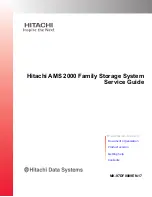
General Description 2-33
POST Execution Flow
The following describes the progress of POST in the chronological order.
IMPORTANT:
Do not make key entries or perform mouse operations while POST
is in progress.
Some system configurations may display the message "Press Any
Key" to prompt a key entry. This message is driven by BIOS of an
installed optional board. Make sure to read the manual that comes
with the optional board before any key entry.
Powering on the server, after you installed or removed an optional
PCI board or moved it to another slot, may display the message that
indicates incorrect board configuration and suspend POST.
In such a case, press
F1
to continue POST. Board configuration
can be made using the utility described later.
1.
After a few seconds from power-on, POST starts checking the memory. The count
message of the basic and expansion memory appears at top left on the display unit screen.
The memory check may takes a few minutes to complete depending on the memory size
of the server. Also, it may take approximately one minute for the screen display to
appear after rebooting the server.
2.
Some messages appear upon completion of the memory check. These messages appear
to indicate that the system has detected the CPU, keyboard, and mouse.
3.
POST then detects the internal SCSI controller and display the message prompting you to
launch the SCSI device utility. (Ignore the message. POST will automatically proceed
a few seconds later.)
Press <Ctrl> <A> for SCSISelect(TM) Utility!
To launch the SCSI device utility, press
Ctrl
and
A
. See Chapter 4 for setup and
parameters.
You need to use the SCSI device utility in the following cases:
–
When new SCSI device is installed in a backup device bay.
–
When an external SCSI device connection is changed.
–
When the internal SCSI device connection is changed.
–
When the internal hard disk drives are configured with HostRAID.
The server automatically restarts POST all over again when you exit the SCSI device
utility.
If the system drive is to be connected to a RAID controller, connect it to the PCI slot that
has a highest boot priority than the PCI slots connected with the other RAID controller.
Refer to "PCI Board" in chapter 9 for the boot order for the RAID controller.
Summary of Contents for Express5800/120Rh-2
Page 142: ...4 46 Configuring Your Server This page is intentionally left blank ...
Page 236: ...7 12 Maintenance This page is intentionally left blank ...
Page 320: ...9 46 Upgrading Your Server Pin Red Pin Red N8103 80F N8103 81F ...
Page 336: ...9 62 Upgrading Your Server This page is intentionally left blank ...
Page 338: ...A 2 Specifications This page is intentionally left blank ...
Page 346: ...C 2 IRQ This page is intentionally left blank ...
Page 406: ...G 4 Product Configuration Record Table This page is intentionally left blank ...
















































